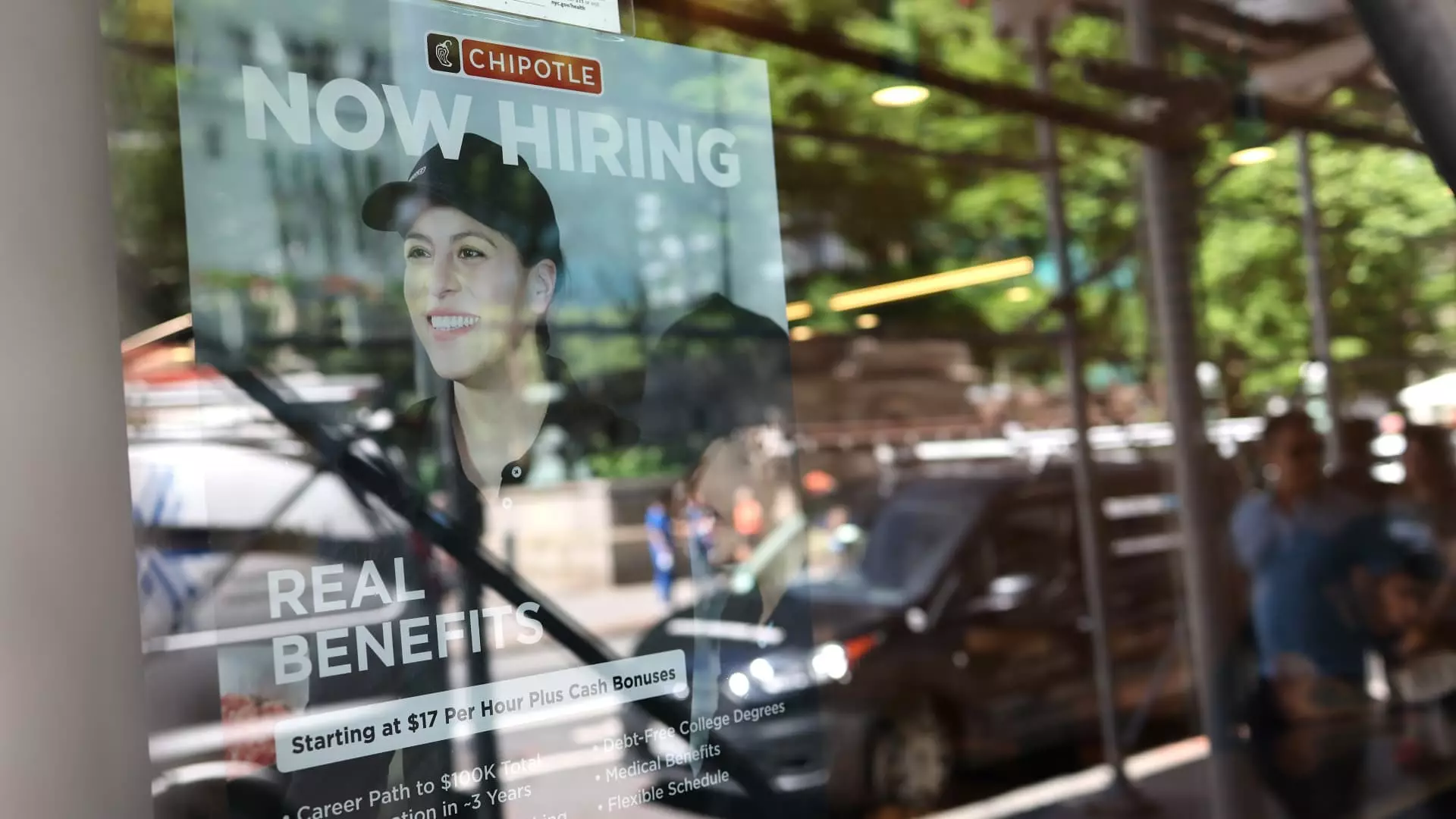In a month marked by turbulence, February’s job growth provided a weak flicker of hope amid an unsettling atmosphere of political and economic uncertainty. Despite the addition of 151,000 nonfarm payrolls, falling short of the 170,000 projection that many had anticipated, this slight uptick raises more questions than it answers. The recent rise in the unemployment rate to 4.1% amplifies concerns regarding the genuine stability of the current job market. As we dissect the implications of this report, it becomes crucial to examine the broader context—one dominated by President Trump’s aggressive push to downsize the federal workforce and the initiatives spearheaded by Elon Musk’s Department of Government Efficiency (DOGE).
The Tug-of-War in Employment Figures
While the overall job market might appear fickle yet stable, the nuances within the data reveal deeper fissures. For example, the federal government workforce shrank by 10,000, a stark contrast to a slight overall job gain of 11,000 in other sectors. Reports of significant layoffs—over 62,000 as noted by the outplacement firm Challenger, Gray & Christmas—should send reverberations of unease throughout the economy. It’s no secret that any substantial reduction in government jobs has cascading effects on local economies, further exacerbating already concerning unemployment metrics.
Compounding these concerns is the fact that recent layoffs largely occurred after the essential reporting period for employment data, thereby indicating that the aftermath will delay repercussions into subsequent months. The ramifications of such uncertainty, especially for economic stability, cannot be understated.
Health Care and Other Bright Spots—But at What Cost?
The health care sector shone as a beacon amidst the storm, creating 52,000 jobs in February—continuing its trend as one of the most resilient sectors. Similarly, gains in financial activities, transportation, and social assistance sectors demonstrated that there remains fertile ground for employment growth. However, this conceals a deeper dilemma: Does sustainability in select sectors come at the expense of a broader economic slowdown?
Critically, while average hourly earnings climbed by 0.3%, the annual increase of 4% was below expectations. This discrepancy signals that while some sectors thrive, wage growth isn’t keeping pace with inflation or cost of living, leaving many Americans struggling to make ends meet.
Labor Force Participation: A Dismal Reality
A more profound concern surfaces when analyzing the labor force participation rate, which plummeted to 62.4%, its lowest level since January 2023. This decline mirrors a decrease of 385,000 individuals in the labor force, leading to a sobering realization: many potential workers are becoming discouraged, sidelined by the economic turmoil and the rapid changes at the federal level. Coupled with a broader unemployment measure that now includes discouraged workers, rising to 8%, it becomes evident that the job market is far from the utopia that some might proclaim.
The household survey also painted a grim picture, reporting a staggering loss of 588,000 workers. When viewed in conjunction with the chaotic climate of market fluctuations following Trump’s presidency, it becomes clear that the employment story is not one of unqualified success but rather a quagmire of inconsistencies and anxiety.
Turmoil and the Road Ahead
The current landscape is fraught with volatility, driven by the whims of a chaotic political environment and sweeping changes implemented by Musk and his advisory team. Market responses to job reports have been erratic at best, illustrating the fragile connection between employment data and economic confidence. The unpredictable nature of the stock market—rocking back and forth on the latest tariff news—further underscores a grim reality: clarity eludes us, and with it, our ability to ensure enduring economic progress.
As we continue to grapple with shifting policies and an evolving job market, we must question whether the measures being taken will ultimately spur growth or perpetuate uncertainty. The dissonance between reported gains and underlying struggles begs for a more comprehensive analysis—a deeper commitment to understanding how changes at the top reverberate through the labor landscape. Ultimately, as a society, we must advocate for sustainable growth strategies that do not merely scratch the surface but delve deeply into the roots of American economic vitality.


Leave a Reply